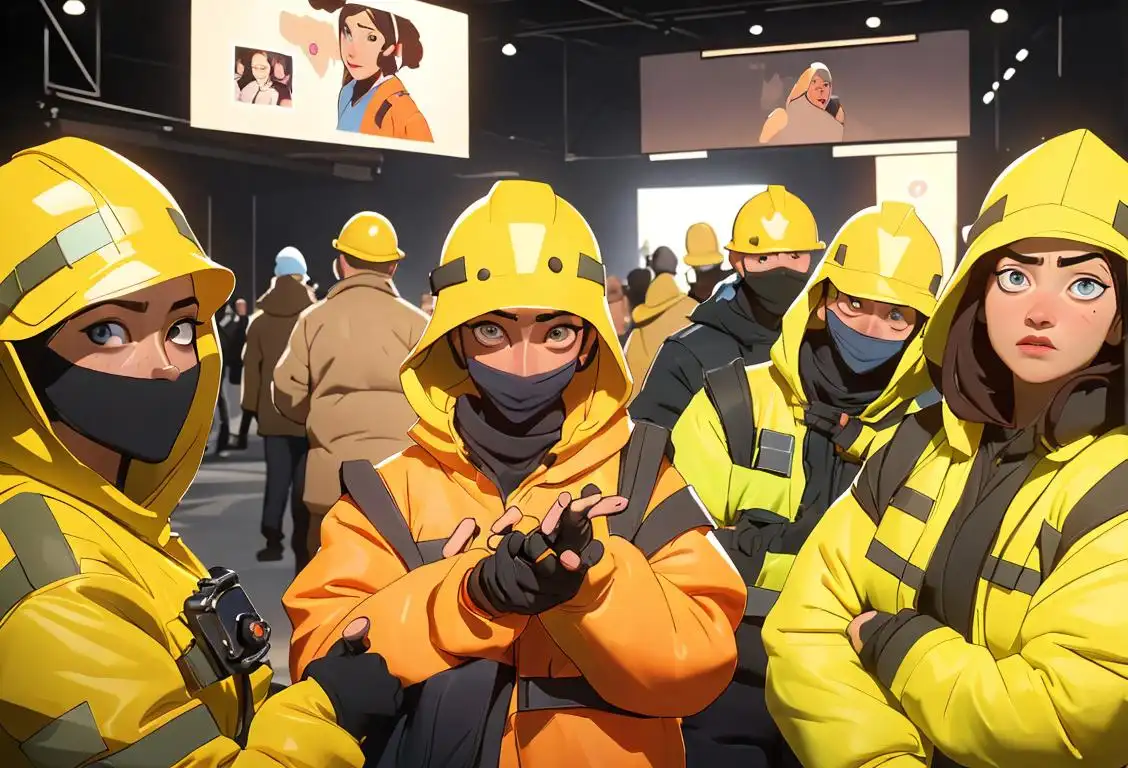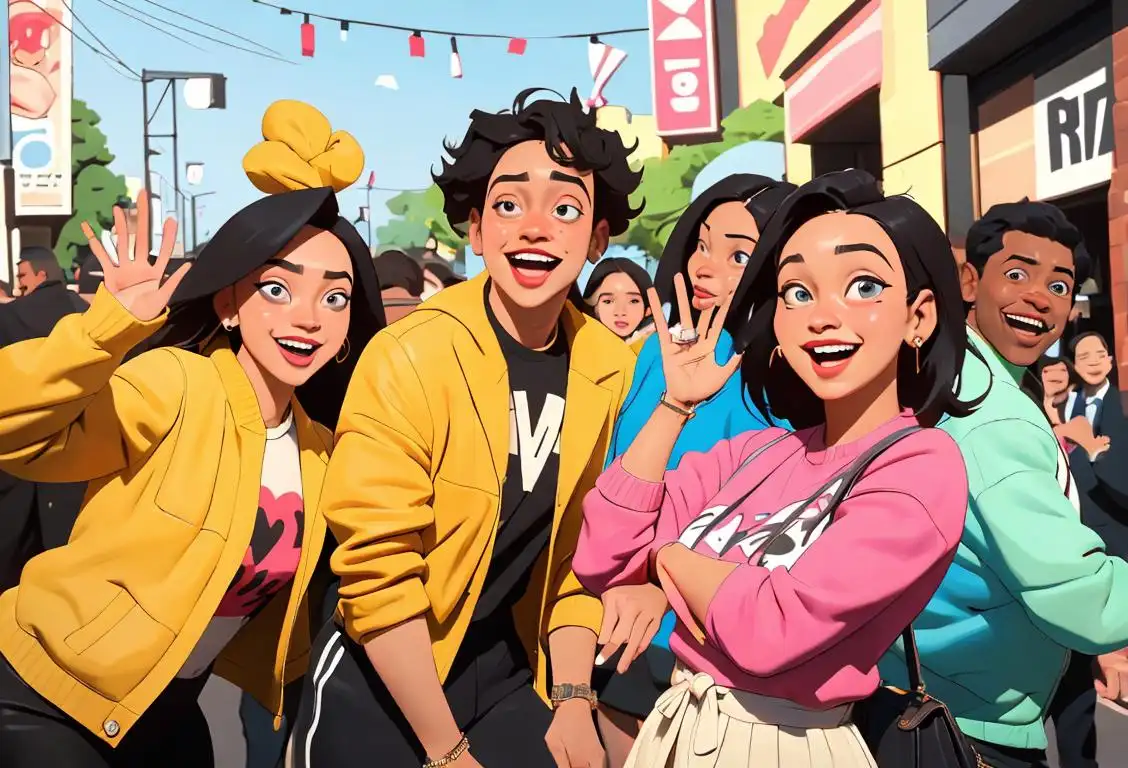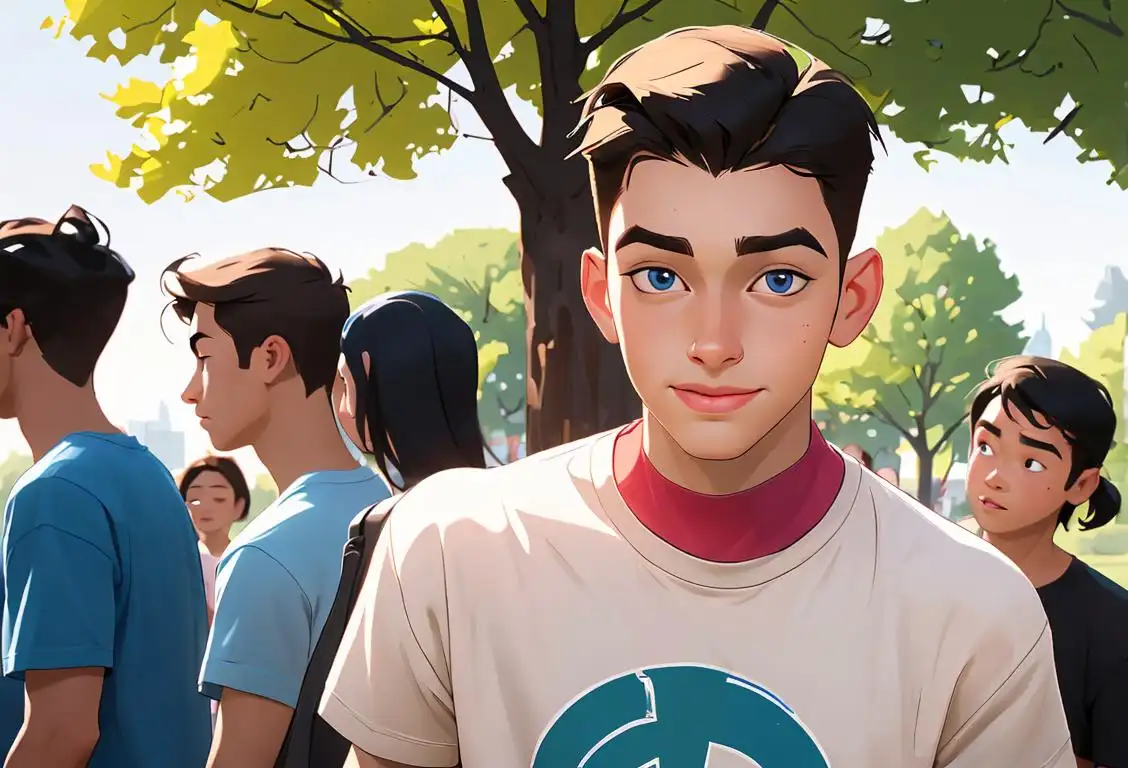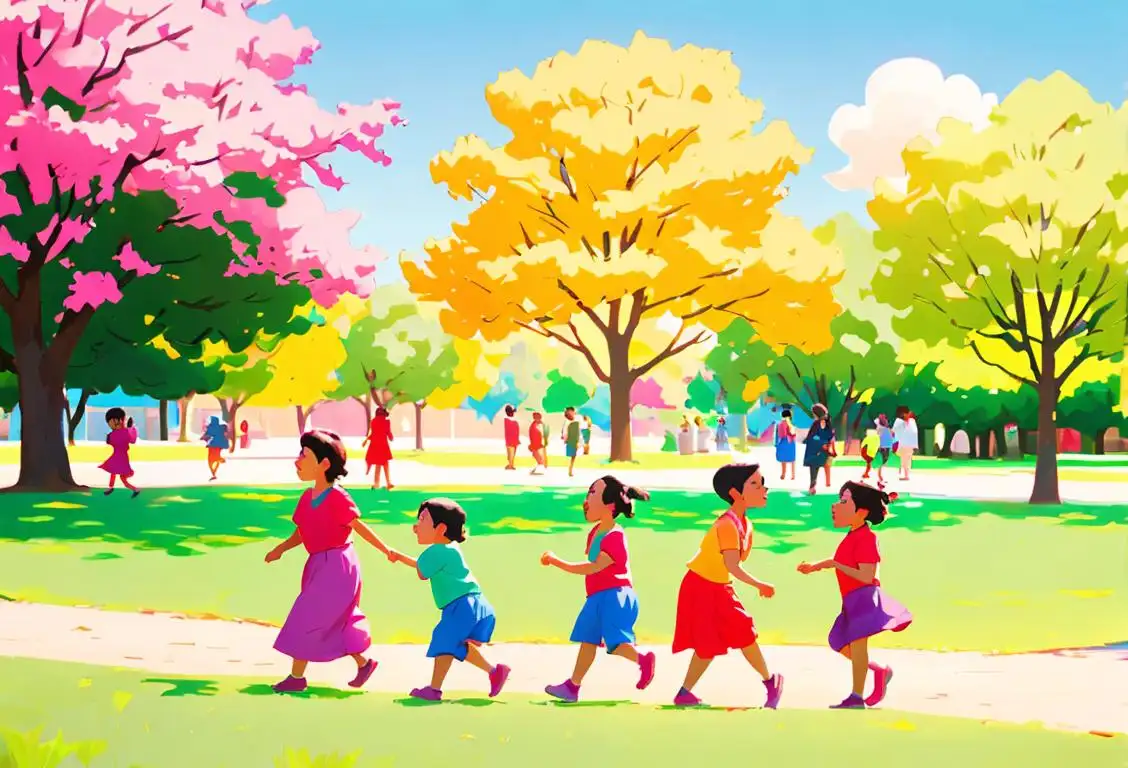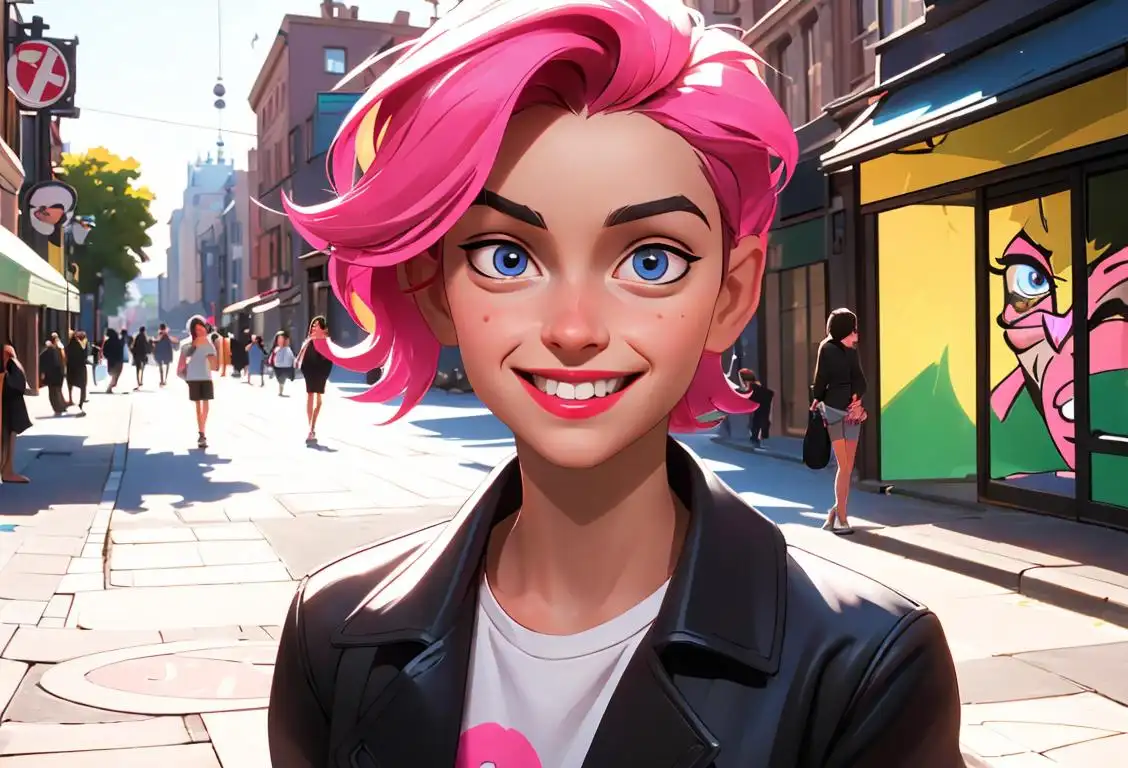National Puroresu Day
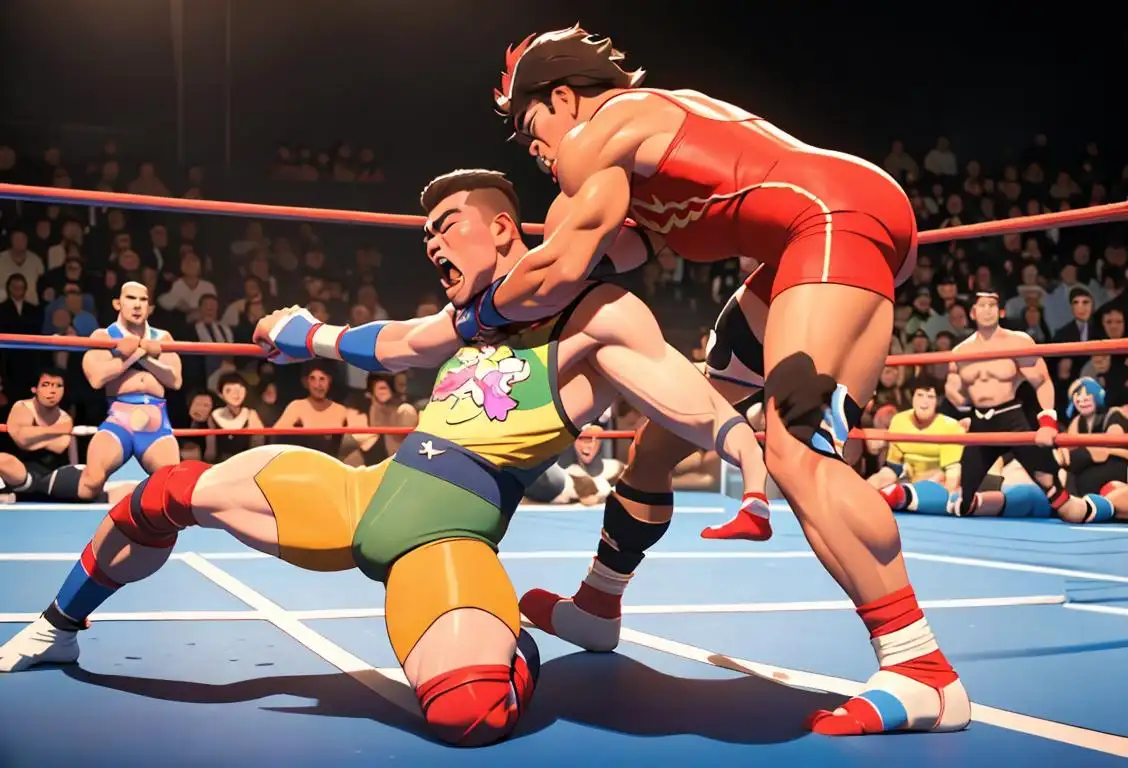
Welcome to the wild and wonderful world of National Puroresu Day! Get ready to dive into the outrageous realm of the world's most intense wrestling style, as we explore the fascinating history and electrifying action that has captivated fans for decades.
When is Puroresu Day?
It's national puroresu day on the 26th July.
The Origins of Puroresu
Puroresu, which translates to 'professional wrestling' in Japanese, originated in the Land of the Rising Sun in the early 20th century. Drawing inspiration from traditional Japanese martial arts and American professional wrestling, puroresu developed its unique style that combines athleticism, storytelling, and over-the-top theatrics.
A Tradition of Legends
Since its inception, puroresu has produced a lineage of legendary wrestlers who have become household names, both in Japan and around the world. Iconic figures such as Antonio Inoki, The Great Muta, and Jushin Thunder Liger have left an indelible mark on the sport, captivating audiences with their daredevil moves and larger-than-life personas.
High-Flying Action
Puroresu is known for its fast-paced and high-flying action, with wrestlers incorporating acrobatic maneuvers like moonsaults, dropkicks, and powerbombs into their repertoire. The matches often feature intricate plots and dramatic storylines, blurring the lines between sporting competition and live theater.
A Global Phenomenon
While puroresu is deeply rooted in Japanese culture, its popularity has spread far beyond the borders of Japan. Wrestling promotions such as New Japan Pro-Wrestling (NJPW) and All Japan Pro Wrestling (AJPW) have gained a dedicated international fanbase, staging epic showdowns that attract wrestling enthusiasts from all corners of the globe.
History behind the term 'Puroresu'
1884
Birth of puroresu.
In 1884, a Frenchman named Juans Parnoud introduced wrestling to Japan. Parnoud, also known as Pietro Fantastico, showcased his wrestling skills in a circus-style event in Tokyo, capturing the attention of the Japanese audience. This marked the birth of puroresu, meaning 'professional wrestling' in Japanese.
1929
Origins of Pro Wrestling in Japan
Professional wrestling first made its way to Japan in 1929 when American wrestlers Ed Lewis and Billy Sandow toured the country. The Japanese audience was captivated by this new style of entertainment, which blended athleticism and theatricality. This initial exposure laid the foundation for the growth of pro wrestling in Japan.
1883
The Birth of Puroresu
Puroresu, a term used to refer to Japanese professional wrestling, originated in 1883. The first recorded professional wrestling match in Japan took place in Yokohama, where a British wrestler named Edwin Bibby faced a Japanese sumo wrestler named Sorakichi Matsuda. This event marked the beginning of the wrestling style that would eventually evolve into puroresu.
1972
Origins of Puroresu
Puroresu, a Japanese term for professional wrestling, has its origins in the 1970s. As American professional wrestling gained popularity worldwide, Japan developed its own unique style, blending elements of traditional Japanese wrestling, known as jujutsu, with the theatrics and storytelling of American wrestling. Puroresu quickly became a sensation in Japan, captivating audiences with its high-flying maneuvers, intricate storytelling, and charismatic performers.
1953
Formation of the Japan Pro Wrestling Alliance
In 1953, Rikidōzan, a former sumo wrestler turned pro wrestler, established the Japan Pro Wrestling Alliance (JWA). Rikidōzan's charisma and skill inside the ring attracted a massive following. The JWA became the first major pro wrestling promotion in Japan and helped popularize the sport further.
1953
The Introduction of Masked Wrestlers
In 1953, the iconic figure of the masked wrestler was introduced to puroresu. The inspiration for masked wrestlers came from the tradition of Japanese stage plays, which often featured masked characters. The masks added an element of mystery and excitement to the already dynamic world of puroresu, capturing the imagination of the audience and becoming a beloved aspect of the sport.
1980
The Golden Age of Puroresu
In the 1980s, Puroresu experienced a golden age of popularity. Legendary wrestlers such as Antonio Inoki, Tiger Mask, and Giant Baba became household names in Japan. The matches became more elaborate, combining impressive technical wrestling skills with dramatic narratives. Puroresu events started drawing massive crowds, and the sport became an integral part of Japanese pop culture.
1953
The formation of the Japan Wrestling Association.
In 1953, Rikidōzan, a Korean-born professional wrestler, formed the Japan Wrestling Association (JWA). Rikidōzan's charismatic personality and unique blend of wrestling and Japanese culture helped popularize puroresu in post-World War II Japan. His matches were televised and drew large audiences, solidifying puroresu as a form of entertainment in the country.
1972
The Formation of New Japan Pro Wrestling
In 1972, the legendary wrestler Antonio Inoki established New Japan Pro Wrestling (NJPW), one of the most influential puroresu promotions in history. NJPW played a vital role in popularizing puroresu on a global scale. Inoki's vision and innovative techniques in the ring brought a fusion of styles, incorporating elements from both Japanese and international wrestling traditions.
1990
The Creation of New Japan Pro Wrestling
The formation of New Japan Pro Wrestling (NJPW) in 1972 played a crucial role in the development and spread of Puroresu. NJPW became one of the leading promotions in Japan, showcasing a roster of talented wrestlers and producing some of the most influential matches in Puroresu history. The promotion's unique approach to storytelling, technical wrestling, and big event spectacles helped solidify Puroresu's status as a major form of entertainment.
1972
Introduction of Puroresu
The term 'Puroresu' was coined in 1972 as a portmanteau of the English words 'professional' and 'wrestling.' Puroresu, meaning 'professional wrestling' in Japanese, became the primary term used to refer to the distinct style of pro wrestling in Japan. It emphasized a more realistic and athletic approach compared to the exaggerated characters and storylines common in American wrestling.
1972
The birth of the 'strong style' wrestling.
During the 1970s, puroresu underwent a major transformation with the emergence of 'strong style' wrestling. It was pioneered by wrestler Antonio Inoki, who incorporated various martial arts techniques into his wrestling matches. This new style emphasized realism and physicality, captivating audiences with its intense and hard-hitting matches.
2000
International Recognition
In the early 2000s, Puroresu gained international recognition and started attracting fans from around the world. Promotions like All Japan Pro Wrestling (AJPW), Pro Wrestling Noah, and Dragon Gate emerged as major players in the Puroresu scene. Japanese wrestlers like Mitsuharu Misawa, Jushin Thunder Liger, and Kenny Omega became global stars, showcasing the athleticism and storytelling prowess of Puroresu to a wider audience.
1990
The Emergence of Strong Style
During the 1990s, a new wrestling style known as 'Strong Style' emerged within the puroresu scene. Characterized by a hard-hitting and realistic approach, Strong Style emphasized stiff strikes, intense grappling, and a more serious tone. This innovative direction further elevated the reputation of puroresu, attracting fans who craved a more physical and authentic wrestling experience.
1980s
Golden Age of Puroresu
During the 1980s, Puroresu reached its peak of popularity in Japan. Promotions like New Japan Pro Wrestling (NJPW) and All Japan Pro Wrestling (AJPW) showcased a roster of talented wrestlers, including legends such as Antonio Inoki, Giant Baba, Jushin Liger, and Mitsuharu Misawa. This era is often referred to as the 'Golden Age' of Puroresu due to the incredible matches and rivalries that captivated audiences.
1989
The rise of New Japan Pro-Wrestling.
In 1989, New Japan Pro-Wrestling (NJPW) was founded by Antonio Inoki and became one of Japan's most prominent puroresu promotions. NJPW brought together top international talent and showcased high-quality matches that attracted global attention. It played a significant role in elevating puroresu to a global phenomenon.
2010
Puroresu's International Expansion
In recent years, puroresu has seen significant growth and recognition outside of Japan. Various puroresu promotions, such as Pro Wrestling NOAH and Dragon Gate, have successfully expanded their reach, hosting events and establishing partnerships with international promotions. The influence of puroresu can be observed in the styles and techniques adopted by wrestlers around the world, showcasing the global impact of this distinctive form of wrestling.
Present
Puroresu in the Modern Era
Today, Puroresu continues to thrive as a vibrant form of entertainment in Japan and beyond. Promotions like NJPW and its rival, All Elite Wrestling (AEW), deliver high-quality wrestling matches that combine athleticism, drama, and compelling narratives. Puroresu has also influenced wrestling styles worldwide, with many international wrestlers incorporating elements of Japanese wrestling into their repertoire. The term 'Puroresu' has become synonymous with a unique wrestling culture that celebrates technical skill, showmanship, and immersive storytelling.
1990s
Expansion and Global Recognition
In the 1990s, Puroresu expanded its reach globally. Promotions like NJPW and AJPW staged events in the United States, attracting international attention and garnering recognition among wrestling enthusiasts worldwide. Talented Japanese wrestlers, such as Keiji Mutoh (The Great Muta), Shinya Hashimoto, and Kensuke Sasaki, gained international acclaim for their in-ring abilities and unique charisma.
2000
The establishment of the Tokyo Dome as a puroresu venue.
In 2000, Tokyo Dome, one of Japan's largest and most iconic stadiums, hosted its first puroresu event. The Tokyo Dome became a premier venue for puroresu, hosting major promotions' flagship events and legendary matches. Its capacity of over 55,000 spectators allowed for grand spectacles, further cementing the cultural significance of puroresu in Japan.
2000s
Modern Puroresu and the Rise of Independent Promotions
The 2000s witnessed the rise of independent Puroresu promotions, offering a fresh alternative to the established giants. Organizations like Pro Wrestling NOAH, DDT Pro-Wrestling, and Dragon Gate embraced innovative styles, incorporating elements of comedy, strong style, and high-flying moves. These promotions showcased new talents like Kenta Kobashi, Kota Ibushi, and PAC (Neville), ensuring the continued growth and evolution of Puroresu.
Did you know?
Did you know that puroresu features a unique style of match known as a 'deathmatch'? These brutal contests incorporate elements such as barbed wire, fluorescent light tubes, and even fire to take the action to extreme levels. It's not for the faint of heart!Tagged
nsfw fun sportsFirst identified
26th July 2016Most mentioned on
26th July 2016Total mentions
10Other days
Personal Safety Day
Ojd Day
Awareness Day
Whine Day
Children Day
Love Pizza Day
Happiness Day
Opposite Day
One Day
Hanging Out Day
